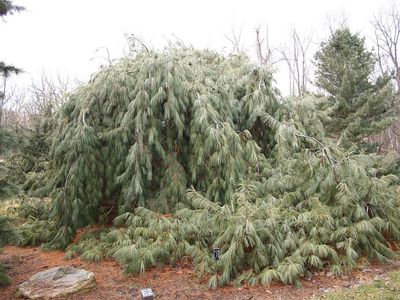Weeping Pine Tree Care

The best sucker control methods in this case are keeping the tree healthy and clipping off suckers when they first appear.
Weeping pine tree care. There are many different types of small weeping trees for any garden landscape in most growing zones. Weeping white pine tree pinus strobus pendula a drooping variety of the eastern white pine won t be to everyone s taste this tree has a unique twisting form draping pine branches and attractive blue green needles. Dwarf weeping spruce trees like the weeping norway spruce picea abies pendula originate from mountainous areas that encourage the evolution of. It s compact slow growing and irregular shape means it can be an interesting specimen tree positioned in the middle of a garden lawn.
Weeping pine trees are also known as pinus strobus pendula or eastern white pine. The needles of a weeping white pine are evergreen and smell good. Since most weeping trees are grafted you will need to keep an eye out for suckers that develop on the species rootstock as they can sap energy and alter the shape of the tree. Pendula is a conifer with branches that droop dramatically toward the ground.
The weeping norway spruce picea abies f. The weeping norway spruce grows from 20 to 60 feet tall and 10 feet in diameter. When choosing a type of small weeping tree for your backyard it s important to consider where it will grow. The bark is attractive when the trees are young but as they age the foliage covers the trunks all the way to the ground.
They are native to north american and are hardy in zones 3b through 7. The weeping pine tree is used as a hedge or as a specimen tree in landscape design. It was created by breeding specific trees whose branches have a strong tendency to droop. It grows slowly and a mature tree can reach a height of 6 to 12 feet with a spread of 25 to 35 feet.


:max_bytes(150000):strip_icc()/Pinus_strobus_Pendula_6zzwikimediacommons-852c79f0f7ba4bfe9c52578233101f14.jpg)















